Huawei's First Windows 2-in-1 Takes Aim at Business Elite
Huawei is looking to make quite a first impression with its first-ever Windows 10 hybrid. The MateBook (price and availability still to be determined) targets the AMEX black card-carrying, high-powered professionals of the world with a 2-in-1 whose looks match the premium specs inside.

Every aspect of the 12-inch $699 MateBook adds to its high-end look. The real leather folding keyboard case feels smooth and supple, and MateBook's aluminum body has precision diamond-cut chamfered sides. Despite the limited real estate on the MateBook’s tablet body and its tiny 10mm bezels, Huawei still found room for a fingerprint sensor on the side.
Update: After months of waiting, we finally have an official price and release date for the Huawei MateBook. Pre-orders start today before general availability on July 11, with prices starting at $699 for a Intel Core m3 CPU, 4GB of RAM and a 128GB SSD up to $1,199 for a Core m5 chip, 8GB of RAM and a 512GB SSD. These prices do not include the MateBook's $129 backlit folding keyboard, the $59 MatePen or the $89 MateDock. In the US, the MateBook will be available as a Windows Signature edition system, which means it will featrure a clean install of Windows 10 without any additional pack-in apps or bloatware.
MORE: Why Your Next Laptop Should Be a 2-in-1
The MateBook's specs are just as premium. It will feature your choice of Intel Core m CPUs, a 2560 x 1440 LED screen, up to 8GB of RAM, a range of SSDs, USB-C and its own stylus with 2048 levels of pressure sensitivity.
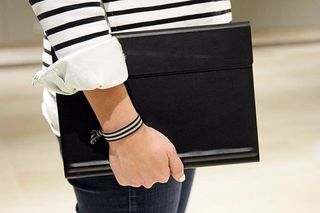
The tricks don’t stop there, because when you’re not jotting down notes or making a quick sketch, the pen also features a built-in laser pointer. You can also use it to navigate back and forward through slideshows via the two buttons located halfway up the stylus.
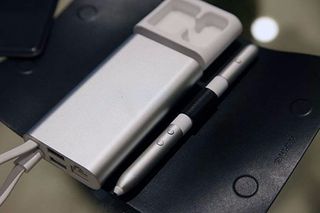
Huawei also has a slick travel case -- again made out of real leather -- that features a desktop dock with all the pertinent ports (Ethernet, USB, HDMI and VGA), a separate box for a set of bundled headphones and a handy loop for storing the MateBook’s stylus.
Stay in the know with Laptop Mag
Get our in-depth reviews, helpful tips, great deals, and the biggest news stories delivered to your inbox.
Huawei clearly put some thought into the entire package, and after I got some hands-on time with the MateBook at Mobile World Congress 2016, I have no doubt that there will soon be a legion of jet-setting executives in the east hauling Huawei’s premium 2-in-1 into various boardrooms and presentations.
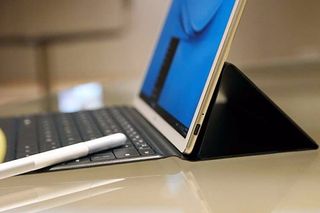
The MateBook’s overall look should fit in with the type of person who likes carrying a leather briefcase around. If you aren't happy just with black, Huawei will offer the folding keyboard case and travel pack in brown, orange and nude colored leather as well.

I was pleasantly surprised at how well the MateBook's kickstand works. Even though Huawei says it has just two positions, I found there was enough room for adjustment so that it never really felt limiting. For the keyboard, Huawei said it was shooting for 1mm of key travel, and from what I can tell, it hit that mark. Ideally, I would prefer a slightly longer key stroke, but there’s enough bounce in the keyboard to prevent a stiff or unpleasant typing experience. I would have also preferred if Huawei had opted for a chiclet-style keyboard design, even though I didn't throw up very many typos during my hands-on session.
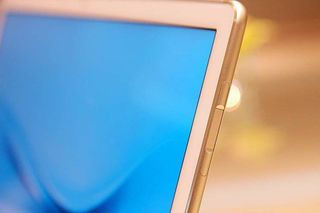
The 12-inch touchscreen is also a thing of beauty as it featured rich, vibrant colors and while also being pretty bright. And because Huawei couldn’t ignore its smartphone efforts -- Huwaei's the third-largest phone maker behind Samsung and Apple -- the company wants to bring apps that will pair your Android device so you can do things like set up Wi-Fi tethering with one touch or simply transfer files between your phone and MateBook by dragging and dropping.
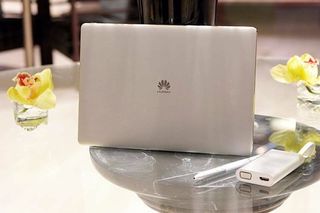
The only thing that the MateBook seems to be missing is the option for a model with built-in 4G LTE connectivity, although I was reminded by a Huawei representative that's what the one-touch tethering is for.
My only question now is whether the MateBook will do as well in the west as I expect it will do in Asia, because if the company's success with smartphones is any indication, we could be looking at another rival for Microsoft’s Surface pretty soon.
